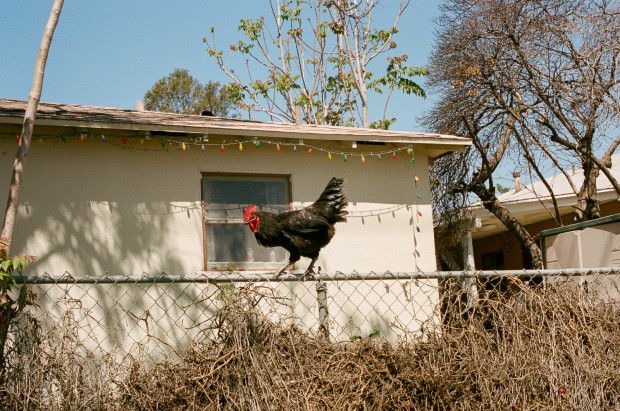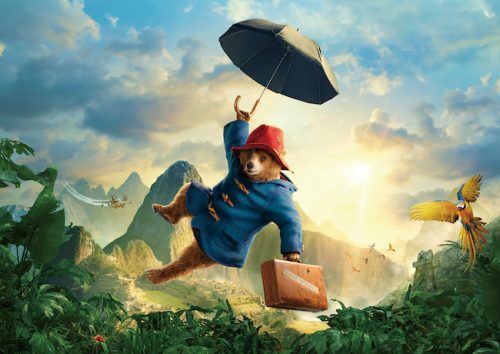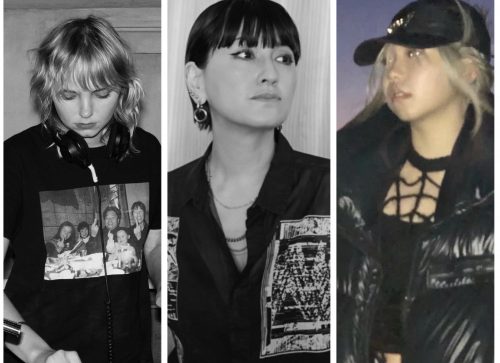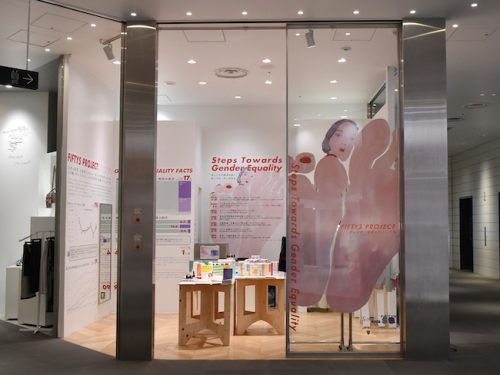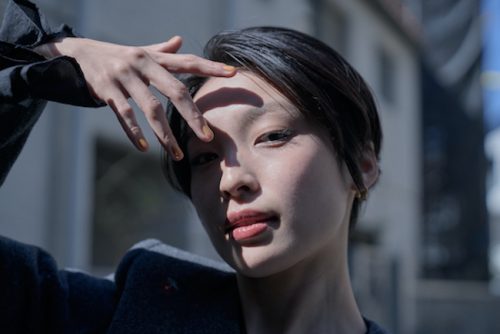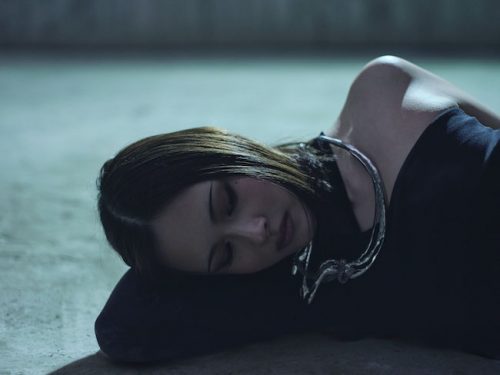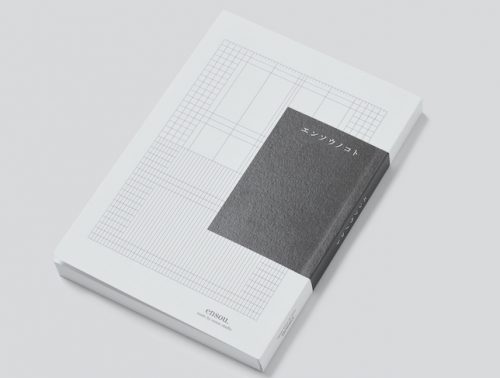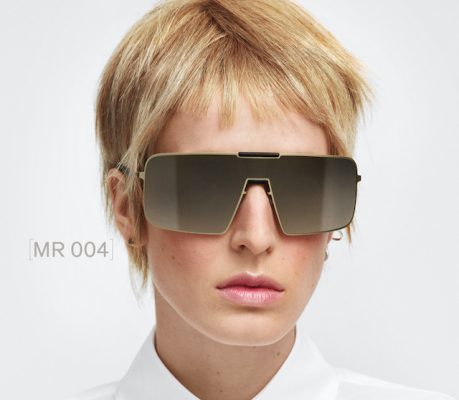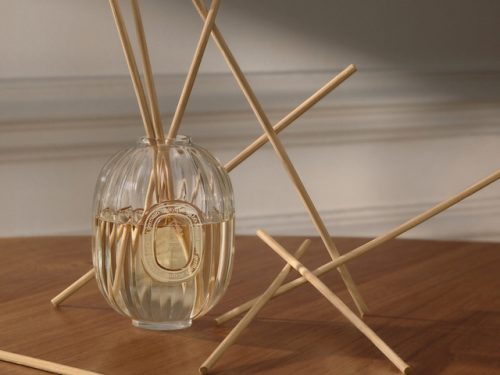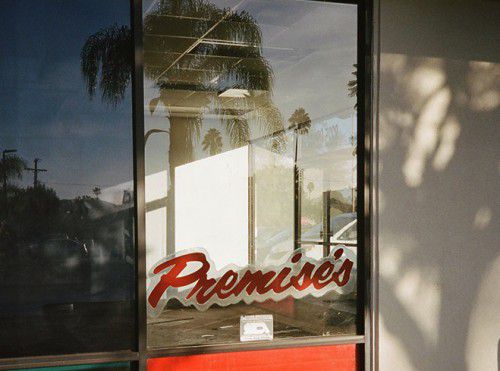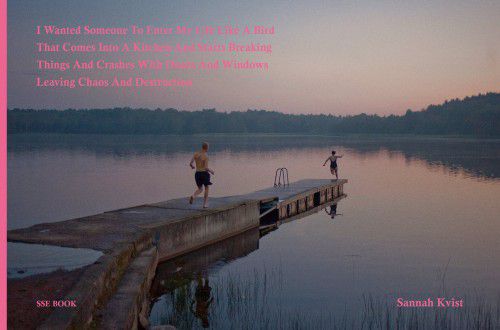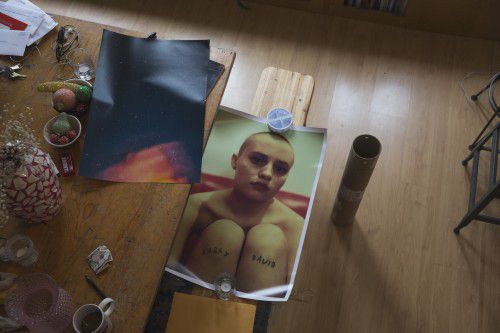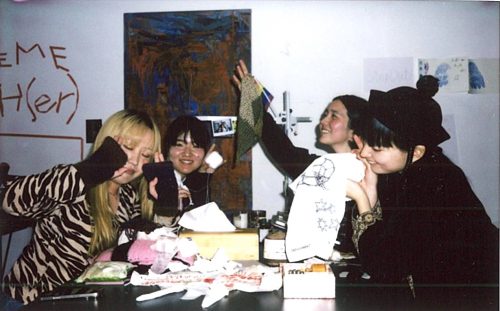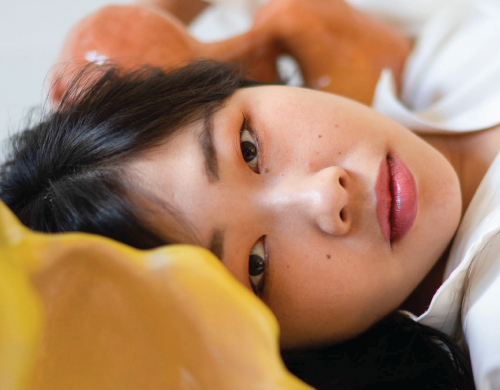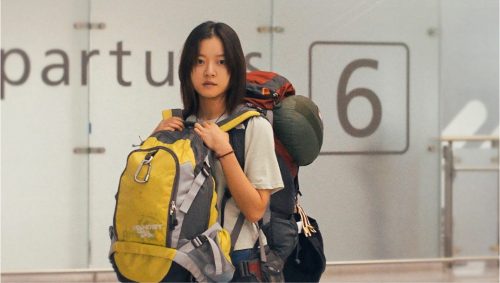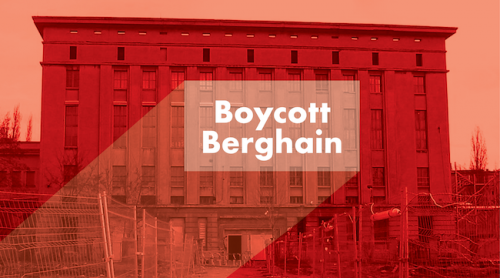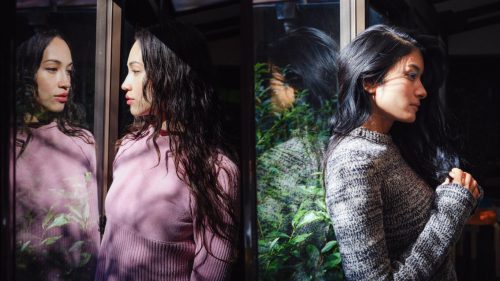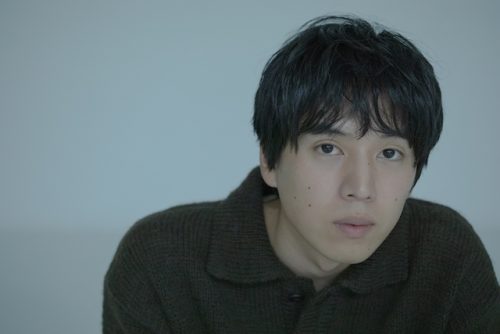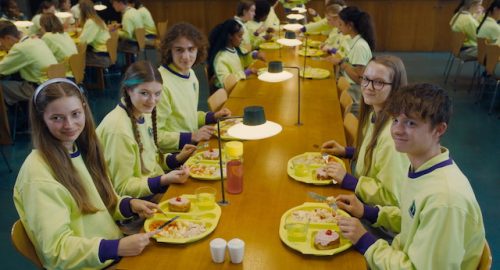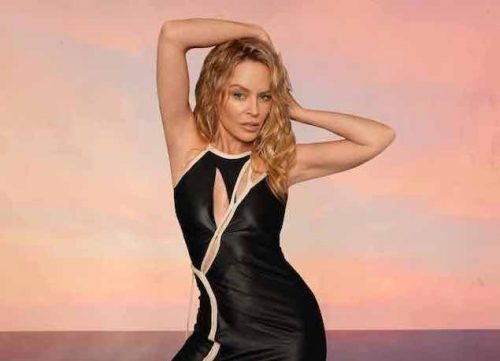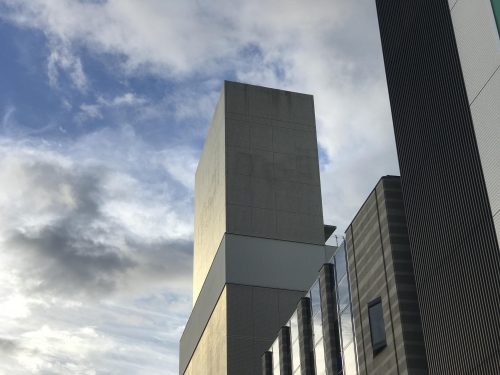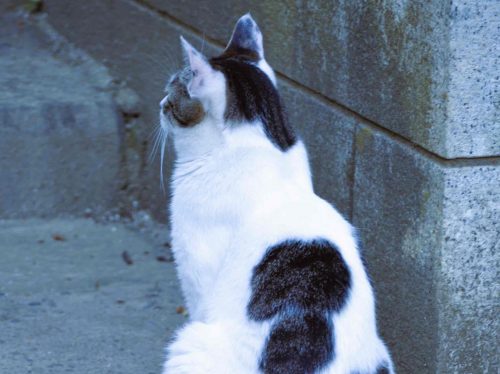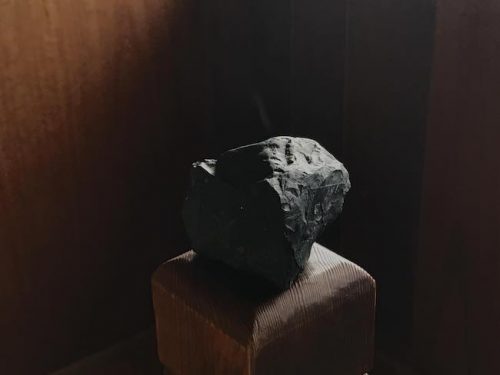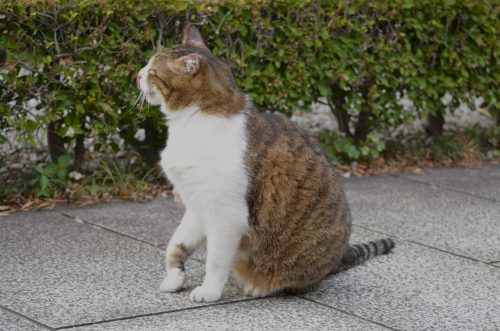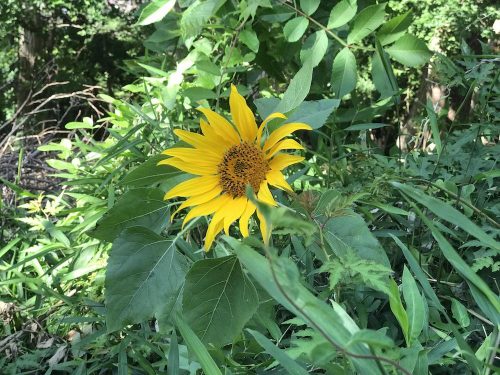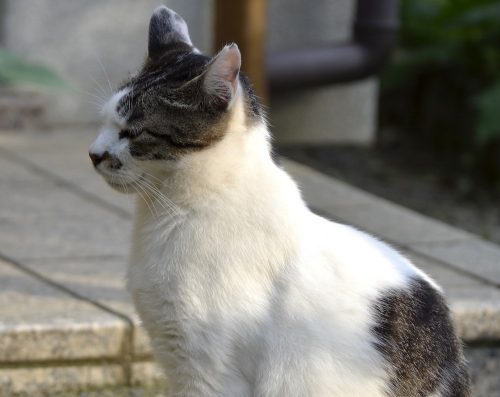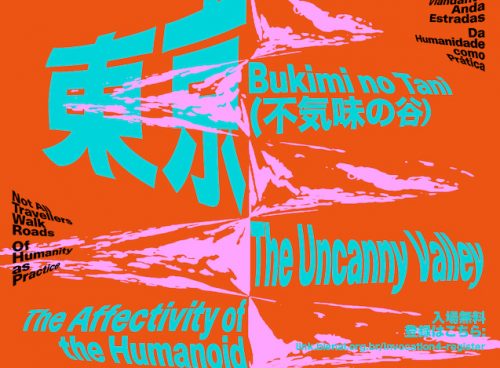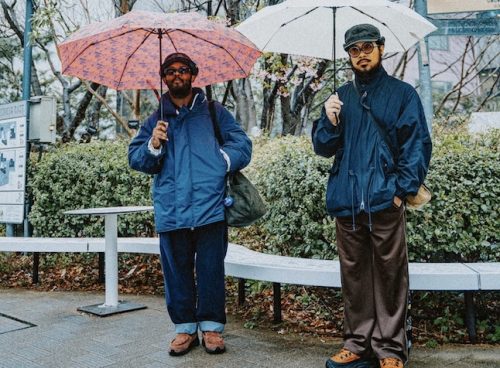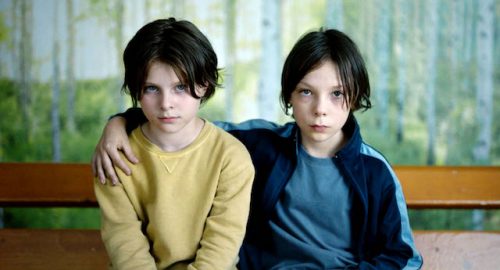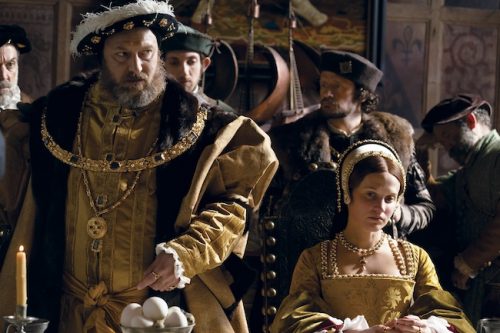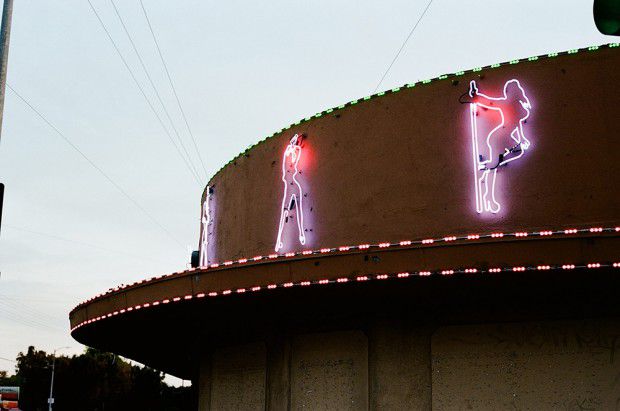
(C)Dan Monick
–Could you please tell me how you started this project and the reason why you chose this location “San Fernando Valley”.
D: I have been living in Los Angeles for 15years and I have always been drawn to this location. I grown up in the completely different area, like the country, but something about it. That is very very drawn to, immediately after moving to Los Angeles. Like it’s not the cool part of the town, lots of people react very strongly to it, like in the bad way, you know. Maybe that is why, because people are drawn to the outsiders as people, I was sort of drawn to outsider as a place. Anyway, Clint and I started talking that we were trying to nail the capture this vibe, had starting with a formal idea – shooting one avenue, because that is very long, miles and miles of street – (Vineland), we just started driving out there but we thought that is too long and maybe NOT, it was too big.
C: There is no real set, idea or plan. We are trying to find the essence of something that is not an attainable product, not the physical thing. It is a mental, and a feeling. It is an instinct. It is more difficult to be able to have actual thing, like we are gonna shoot this way and so we will obtain that things that we are searching for. It is kind of just going out there like a hunting. we are up there hunting right now.
–Is it your intention to show the other side of LA?
C: The thing is, that has been shown plenty. So this is actually showing the other side of LA.
D: Vally is not, it is like people from. Vally is typically within a county, call Los Angeles. Yet it is not Los Angeles, like a joint twin, but that is like unbelievably different people, and one of them kinda, and both kinda hate each other, like they are not friends. People…like everyone, even today I talk to people grow up in LA about the Vally. They show the very strong reaction, people don’t like it.
C: This is like the outside of LA.
D: It is surrounded, it is literally a Vally and it is connected, it is like you can drive, you didn’t know you would be living for the Vally, you wouldn’t be like Wow you are taking a break. Now in the Vally it’s like a in stop whole time, physically, geographically. The big city hills right here, in the Vally is like the other side, Vallywood hills is like a hollywood hills, separate from Los Angeles of Vally.
C: Kinda part of this showing how…This is kind of pull out opposite of Los Angels that everybody knows that is to people never show the fancy side of LA.
D: But in the weird way it is not that we are avoiding that it is not about that place. It is about this place. Like..Vally girl the songs …..all that stuff, coupled different movies…It sorts like we are not trying to change anybody’s opinion of Los Angeles. We just kinda show this place has very weird reputation and I am personally, like totally in love with it and then…I mean I am just trying to make it clear that not about different side of LA, this is about this place.
–This project “Vineland” is made by two artists. How did you do visual training together?
D: I have been out there a lot, but Clint’s gone there a very little. We are both with similarity in our style. It was interesting two people who has two very different relationship with that one place and document in the similar way, you know. It is like, two things, one is like the people who, when I know they have the same feeling that I have about it. It is just like… you can not articulate. Very strange. It was something that very interesting. And we both are walking together and shoot mostly together so we see something, one thing will both catch our eye, whoever see the first, kind that gets playing on that shot sometimes. We both shoot the same thing and sometimes the person didn’t see it first. Then making me add it. It it very wired transparent of aesthetics and a documentation.
C: It has been a very good excises and understanding how to share and not have any big hung up sign who shot what. It is just like the best work to be in the show for the add it. what is the best way to articulate that who has the best version of that vibe, I guess that is the best way to put it. That it is not about the shot, whoever got the first, that’s nice but it is not about the shot, it is not that one count.
D: It is cool, again like that style is very similar yet still it is about trying, because I guess I have gone there forever, but still I have no idea how to express it hat someone’s gone there very little. It is just like I don’t even know what is going on up here, it is so huge.
C: I am definitely a tourist up there.
D: But it is like that cool thing is like there is still similarity in the way that our individual language that we both have.
C: The work is definitely from the same page.
D: Yah so it’s cool.
C: I think what the idea was we use the books to help us understand what the exhibition made of, the idea was the project and the exhibition was a part of project.
D: The exhibition, it is like talking to Miyuki(www.ccommunee.com), having her, you know “Hey we wanna do the show in Japan” and then she was like “What would you show?”, and then Clint and I were like “What should we show?”. Here is the idea and then one day we shot once when I like…this could work and then this is an idea! it sorts of born out of the doing the show and then could be do the another. The invitation and whole things was like talking to Miyuki.
— How did you guys choose the photo together?
C: I think we kinda knew about how big for this. We are not done, this is not done. So many miles to go still but I mean for this we kinda wanted to have an equal amount of work so we just picked….for the books. We picked the number of images that we are allowed to pick for each of us for this and split in the middle, basically we wanna 60 images and I mean each of us can have 30. so we took those images and adding done into some sort of narrative, kind of get feel like you are coming through, you are flipping through this book and feels like you are flipping through the Valley. That’s what we took that idea and decided to bring the idea into the exhibition.
But in the book, it squishes in little…and one moment in the same frame…let me show you.
I don’t wanna go too deep and we are not supposed to go long winging but…So this is Dan’s photo, and then this right here is that mailbox, so this is my photo and we switched over shooting the same space, and then like all of this Dan’s and then here becomes all my works.
So it’s kind of like the flipping over the lap. That is kinda how we got head around, what we wanna to show and then when we got to the gallery, we actually kinda thoughts why don’t we make it still has like continues, like going through the Vally kind of vibe but still want to have a line to know whose is whose, looking at everything, we decided to be all Dan’s should go up top and all mind should go lower, basically Dan is much taller than me, not actually true but kinda true. (haha) do you feel that is fair?
D: Yah, we did look at the, we just tried to figure out how to layout so what would be interesting on the wall as well as help with the story. I love like one big long line like a time line, kinda looks like a map. That’s kinda start planing to it and then deciding. It was joke like Clint was like you should go high and mine should go low and holding them up on the wall and that sorts of, you know, sometime it is easier to make decision with no reason. So you don’t think about it.
So I turned it adding and deciding. We shot 30 rolls of films each, we each shot like 50 photos.
The show was 10~12 photos each and we knew trying to get down to the 12 photos each. We just like print out everything, and just lay on the floor, and sit there and like, you know, move the friends around, talk to each other and friends come in we love, tried to chase them. We didn’t tell them who took what, and we just sit and make them add it. Just play with it until you are like you feel right and even have like final add it to, and then we each took our own home and kinds was like, well, that is cool but I wanna put these two back it because I really like. It is all gut. It’s not like science. Physically laying the photos on the ground, little tiny flinging out, moving around.
–Both of you guys often shoot the town and street like “Vineland”.I know Every town has a character of its own like people. Could you tell me the reason why you are attracted to the town or street.
C: Maybe we both have different answers for this, because this is deeper and deeper question for me. I have been trying to show what the world is, what we have all created as the humans, showing the things that we illuminated. So I am trying to show emotion and society through the enablement object that people that who has made.
When you show a certain item, it kinda gives you a feeling, like when you see and working mailbox and it’s different than that broken mailbox. It’s different than a nice and perfect mailbox, like the perfect mailbox that you would see in the store. So I always try to make it sorts out we see this mailbox, you start to think about the life of the person who uses that mailbox and all the things that surrounded around the mailbox all the time. That is me. Dan might have completely different answer.
D: Nah, most part is the same thing. it’s like these are all portraits that people to the degree. It’s about the traces that human created. Look at this sign, it’s like whose crossed that under the sign, who saw that sign, who sleeps and drawn to that place, and what happened to the place.
It is all about, who made this plate and sign, they had a pride and now it sorts of disappear, and then there are all still about people to the degree. Perfect laying the flower, all that kind of stuff either that technically still like still life or landscape, but they are not. I take lots of portrait of people. I do it also for living so it’s very nice. It’s sort of just a try to communicate the same things as communicate to take portrait of people without any people, as also I love taking portraits of people but it kind of relieves sometime because this is like the sign has never blinks and it’s not fussy. You know what I mean? It’s very relaxing to me, very medicated to try to just shoot stuff like that. We are people that has lots of energy, low energy, clean energy. that is part of it. Clint is pretty spot on it terms of is all about people.
C: This is all about people, that is the most important thing, not about the sign.
D: Because somebody made those.
C: This is about the good time that happened. Maybe that trouble that happened that after that…and then how this is like that period where that kids come eat doughnuts and drink and stuff. It is all about people. It is juts not showing the actual people.
–Both of you are running the small publishing labels, Deadbeat Club and Cash Machine. How do you feel/think about the current circumstances/situation of publishing/print industry in LA?? Is it popular and growing, to make zines/book among young kids and other generations in LA?? Like lots of people came up to you to ask about zine /book making?? To be contrary to the publishing industry, what would you think about Instagram?
D: It’s pretty big in LA. Seems like a ton of people are self/small run publishing. A lot of what I still do zine wise is on an actual copy machine and hand folded and stapled. When people ask me about it I think they find it pretty funny that I do a lot by hand still. Then when they ask me about books, once I start telling them the costs, they get a little scared off haha.
Yeah I think it is pretty popular around here. The LAABF gets bigger every year and little side fairs keep popping up.
Some favorite small publishers are Deadbeat Club, These Days, Hesse Press, Fulcrum Press Zoe Zag to name a few.
C: like doing this all day. (Scrolling down the Instagram)It is not as exciting as sitting down slowly (looking at the photo book), the idea to bring it to show everything down and actually look at this photo, like if you look at this photo on the Instagram, you are not gonna say what is going on…like these doughnuts, what it is all this about. It doesn’t like me sit and think about using the moment of and talking about. Where Instagram, you like it and you go under…but here(looking at the books) you have a moment to breath and be a part of it and be…yourself.
That my photography does not do very well on the internet. because my images/ works are about sitting, fitting and having the moments. It is lot of part of it because of that I started the publishing company.
D: I can get away without using Instagram. I totally will 100%. But sort of it is part of communicating. It is beautiful like today we run into this kid and he pulled up the Instagram and showed it to me. You know he spoke no English and we speak no Japanese. pulled up and start picture, you know it’s like, this is you guys, and we just communicated, Instagram is like pointing the picture and it’s really cool. I fall in the kid and know how to communicate, see what he is doing, it’s really beautiful. But on the same time, it is nothing. I start taking the picture because of the books. It’s like I make it no matter what kind of. when I was a kid, sneak out of the job I had and go get a photo book, and find the photo books like…OMG it’s like this !!!!!! and that we always be a part of it forever, but you know, I don’t know how to make it different, I just know that I personally gonna keep making it.
C: The other thing is Instagram is free.
D: Yha yha.
C: And funny this photos (showing the photo book) we have posted on Instagram, but this cost lots of money that, we sit and think and put lots of thoughts into what it should be. And in Instagram anyone could put anything up and it shows. I think this format(Book) kind of slow and make you try hard.
D: And the same time Instagram gets the venue for people who can’t or who don’t have the means to put something like phonebooks or put photographs together, it’s like a kid, today at the diner, he has shown his photos on Instagram…it is awesome, and it is super great. It is not a bad things that coming from the generation when I didn’t have stuff like that
now I do have stuff like that, I do kinda miss when we didn’t have stuff like that.
C: For me, and the work I make, the printed page is very important. When looking at things on the internet and on our phones, work goes by in a flash. But when you have a book in your hands you are forced to slow down and actually digest the work in front of you. The fact is a physical object is great because it gives a bit of weight to the work… It kind of signifies “this is important.” or “I made this for you… please have a look.” It’s also something that is finite. Eventually these books will sell out and not be available anymore, so its a special, collectable thing. I make a small book for every project I work on. It’s a great tool to check in and see where how the project works and what’s missing. Publishing will always be important to my practice.
D:To be honest I don’t have a lot of thoughts about the industry in particular. I love books and I love print. I love putting work I enjoy into print. That’s about it. It’s all about making things I enjoy and that I think other people will enjoy. That and the satisfaction of seeing someone see their own work in print possibly for the first time. That is always really great.
